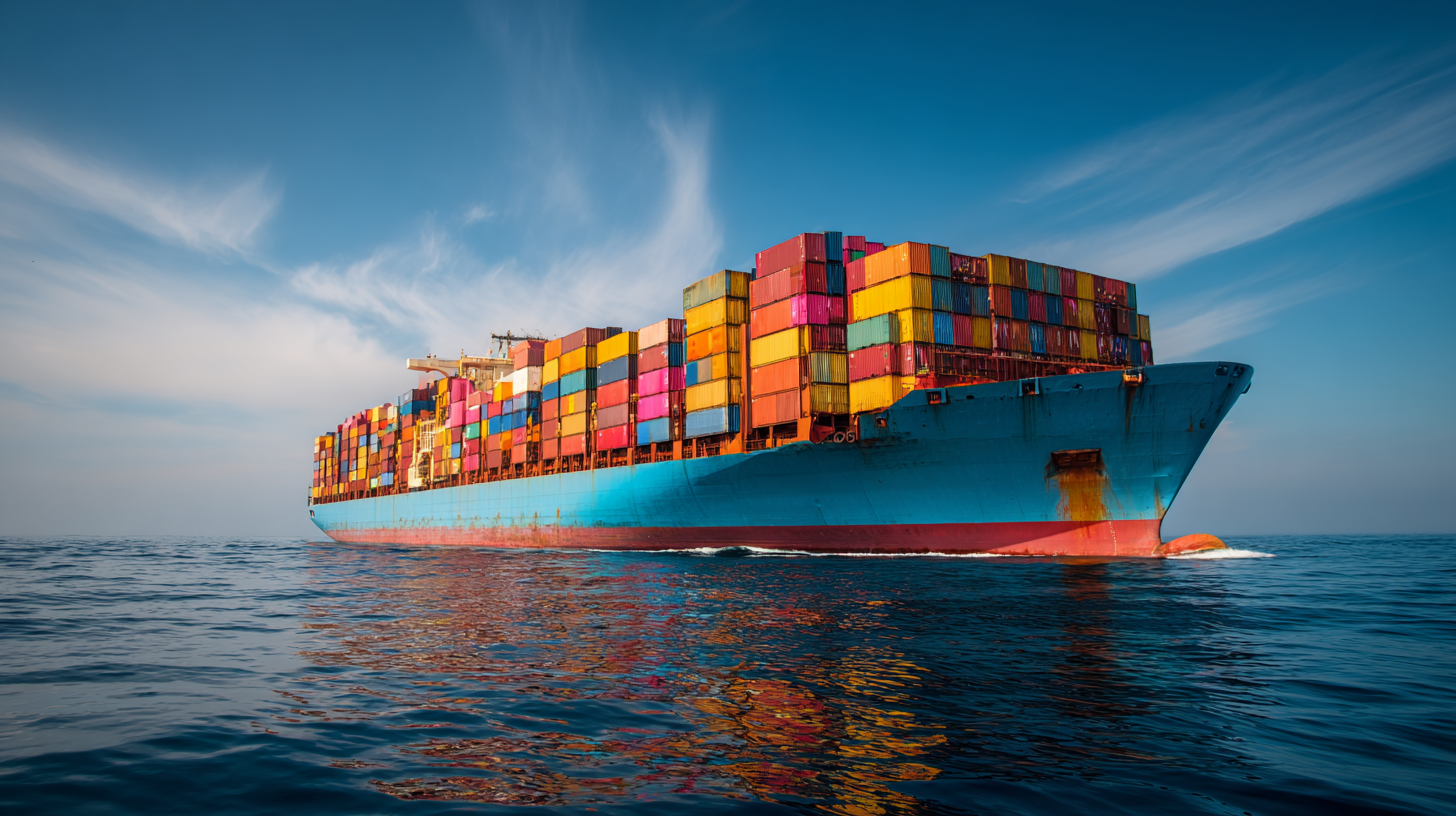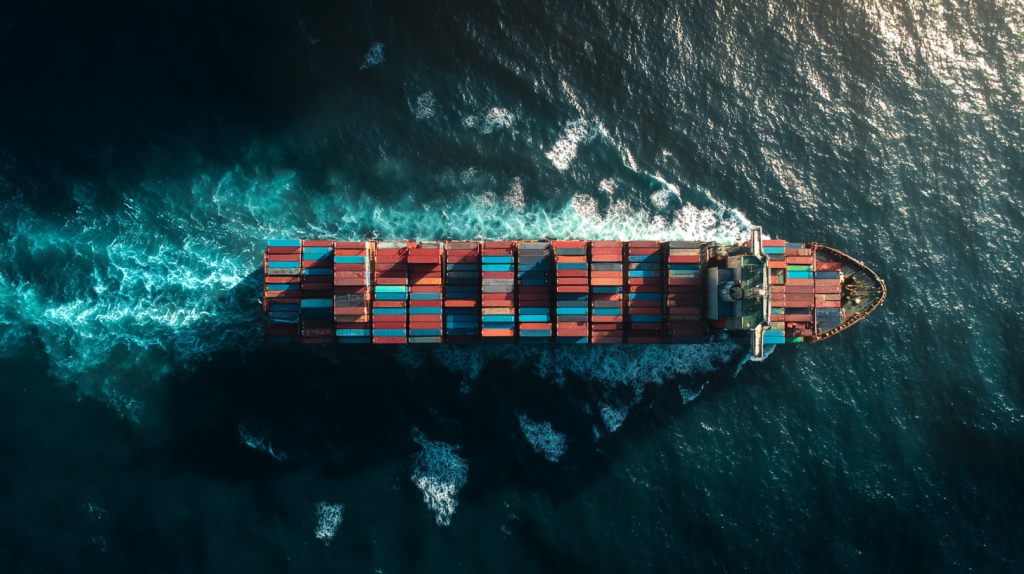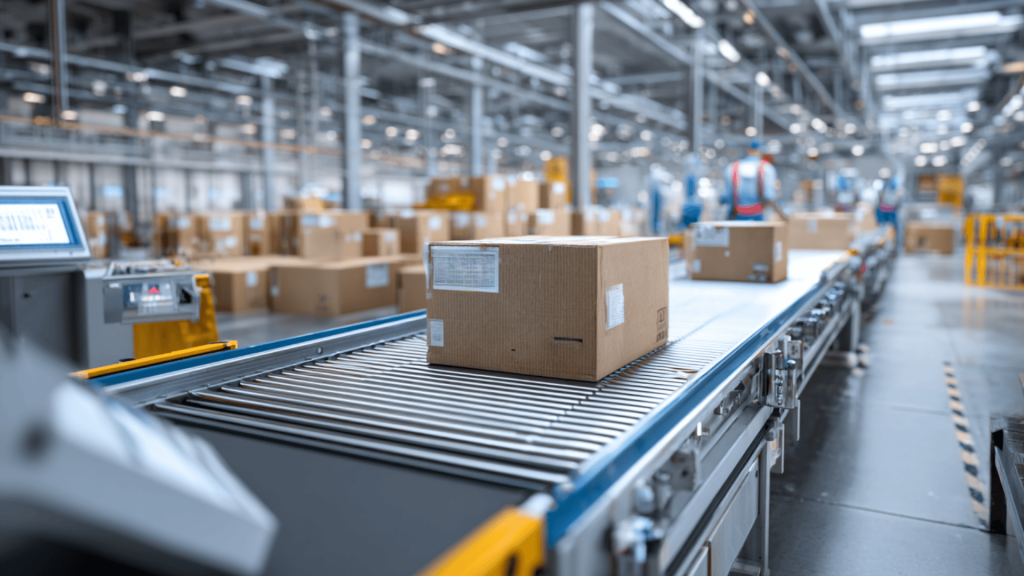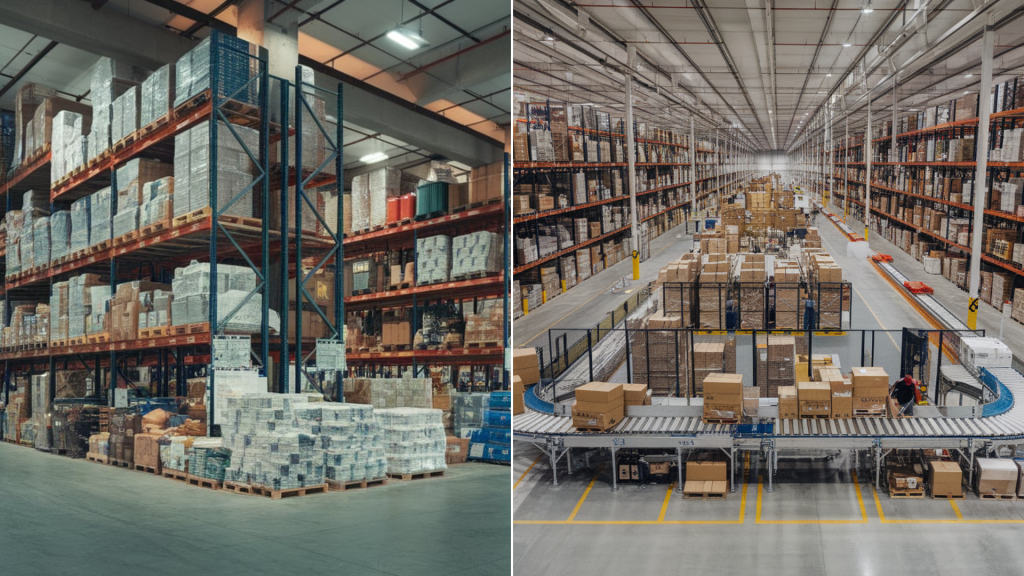Did you know the world’s largest cargo ship can carry more than 24,000 containers at once? That’s like stacking a line of boxes long enough to wrap halfway around the Earth. Pretty mind-blowing, right?
Let me help you understand how many containers a cargo ship can actually hold and why it matters.
In this blog, we’ll talk about the average number of containers, what a TEU means, record-breaking ships, and how they keep global trade moving.
By the end, you’ll see why these giants of the sea are the backbone of international shipping.
How Many Containers Can a Cargo Ship Carry?

The size, design, and purpose of the ship decide its carrying power. Let’s look at the average numbers that most ships handle today.
On average, a cargo ship can carry between 10,000 and 20,000 containers. Smaller feeder ships may hold just a few hundred containers, while modern mega-ships carry tens of thousands.
When people ask how many containers are on a container ship, the answer depends on the vessel’s size and purpose.
For example, ships on shorter regional routes are much smaller compared to those crossing oceans with global trade.
What is a TEU?
The word TEU stands for Twenty-foot Equivalent Unit. It’s the standard measure used in shipping.
A TEU is based on a 20-foot container, but since many containers are 40 feet, they count as 2 TEUs. So when you hear a ship carries 15,000 TEUs, it could mean 15,000 small containers or a mix of large ones.
This unit makes it easier to compare how many containers a cargo ship can carry.
- A TEU is about the size of a small garage.
- TEU is used not just for ships but also to measure port capacity (how many containers a port can handle in a year).
- The TEU system helps track global trade volume, since almost all container ships use it as the universal unit.
- In 2022, the world’s busiest container port, Shanghai, handled over 47 million TEUs in one year.
- TEU makes logistics easier because shipping companies, ports, and customers all use the same measurement system.
- Although TEU is the standard, sometimes people also use FEU (Forty-foot Equivalent Unit), which equals 2 TEUs.
Factors That Influence Container Capacity
Things that affect the container capacity:
1. Ship Size and Design
The size of a ship is the biggest factor in how many containers it can carry. Bigger ships with deeper hulls (the underwater part of the ship) can hold more weight and stack more containers.
The way the deck and cargo holds are designed also matters. If the ship has wide, open spaces, containers can be stacked higher and more securely, which increases capacity.
Larger vessels with deeper hulls can carry more containers. The design of the deck and cargo holds determines how containers are stacked safely.
2. Safety and Balance
Even if there’s space for more containers, the ship can’t just be filled randomly. Containers must be loaded carefully to ensure the ship remains balanced.
Heavy boxes usually go at the bottom, and lighter ones at the top. If the weight isn’t spread out evenly, the ship could tilt or become unstable in rough seas.
Safety rules limit the maximum number of containers, even for the largest ships.
3. Port Infrastructure
A ship’s carrying capacity also depends on the ports it visits. Large ports have deep water channels and tall cranes that can handle mega-ships with thousands of containers.
Smaller ports, however, may not be able to serve such big ships, which means only smaller vessels can dock there. So, the number of containers a ship carries isn’t just about the ship – it’s also about where it can safely unload.
The Evolution and Types of Container Ships
The largest container ships today can hold more than 24,000 TEUs.
These record-breaking giants, mostly operated by shipping lines in Asia and Europe, are designed to move goods across major trade routes.
To imagine their size, think of a floating city that can carry electronics, clothes, cars, and even food all at once. Compared to older vessels that carried just 1,000 TEUs in the 1960s, these modern ships are truly engineering marvels.
Types of Container Ships
Let’s understand the the types of container ships:
| Type of Container Ship | Description | Capacity | Role in Global Trade |
|---|---|---|---|
| Feeder Ships | Small vessels moving containers between local or regional ports. | A few hundred to 3,000 TEUs | Connect smaller ports to bigger hubs. |
| Panamax & Post-Panamax Ships | Medium to large ships built to pass through canals like the Panama Canal. | 3,000–14,000 TEUs | Handle long-distance trade routes. |
| Ultra-Large Container Vessels (ULCVs) | The biggest ships currently in service. | 15,000–24,000+ TEUs | Carry the highest number of containers on a container ship, serving major global routes. |
Cargo Ships in Global Trade
Cargo ships are the backbone of global trade, carrying nearly 90% of goods worldwide.
They connect producers in one country with consumers in another, making international commerce affordable and efficient.
The busiest routes include Asia to Europe and Asia to North America. The sheer number of containers on a container ship helps reduce costs, making it possible for us to enjoy products from across the world at reasonable prices.
Uses for Container Ships
- Container ships transport almost everything we use daily, including furniture, clothing, electronics, and more.
- Refrigerated units (reefers) allow them to carry fresh produce and other perishable goods.
- Some ships are designed to handle vehicles, chemicals, and other specialized cargo.
- Without container ships, global trade would slow down and become more costly.
- They are the silent workers who move items made overseas right to our doorsteps.
Environmental Impact of Large Container Ships
Large container ships burn a lot of fuel – some use up to 250 tons of fuel per day when traveling at full speed. However, the surprising fact is that they are actually more fuel-efficient per container compared to trucks or planes.
For example, moving one ton of cargo one kilometer by ship uses about one-tenth of the fuel needed for airplanes.
Still, ships contribute nearly 3% of global carbon emissions, which is more than the entire aviation industry. Because of this, shipping companies are working on greener options like biofuels, liquefied natural gas (LNG), and even hydrogen-powered ships.
Some new ships are being designed with wind-assisted sails or special hull shapes that reduce water resistance. These changes may not only lower emissions but also cut down on fuel costs in the long run.
The Future of Container Shipping
The future isn’t just about making ships bigger – it’s about making them smarter.
Engineers are developing autonomous ships that can sail with little or no crew, guided by artificial intelligence. This can help plan better routes, avoid storms, and reduce fuel waste.
There are also projects working on fully electric container ships for shorter routes, which would cut emissions to zero while in operation.
In fact, Norway launched one of the world’s first electric container ships in 2021. Another interesting trend is using blockchain technology to track containers in real time, making global trade more transparent and efficient.
Experts believe the ships of tomorrow may carry even more than 25,000 containers, but the main focus will likely be on cutting pollution.
Cleaner fuels, smarter designs, and digital technology will shape the future of global shipping.
Conclusion
So, how many containers can a cargo ship carry? We’ve seen that it can be anywhere from a few hundred on smaller ships to more than 24,000 TEUs on the largest ones. When I think about it, that’s like moving entire cities of goods across the sea.
We rely on these ships every single day, even if we don’t always notice it.
The furniture we sit on, the clothes we wear, and even the food we eat often travel in those containers.
find it amazing that one standard measurement, like TEU, helps us understand and compare ships of all sizes.
As we look to the future, we know ships will not just get bigger but also smarter and cleaner. We need them to keep the world connected, and I believe container ships will continue to be the lifeline of global trade.





